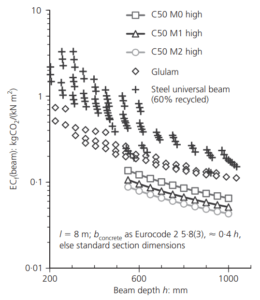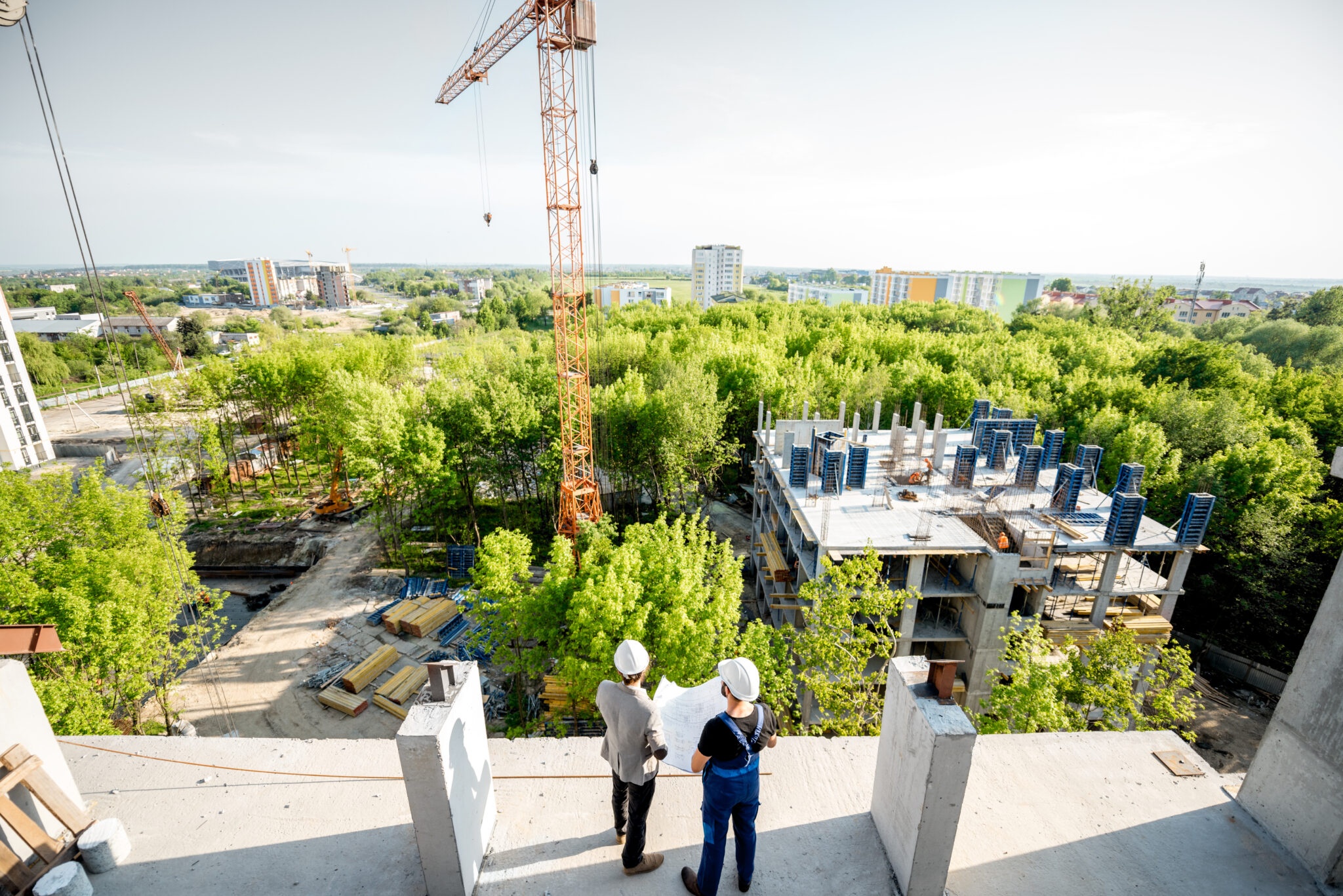A few days ago, CNN published an article entitled “Concrete is a disaster for our planet: can the building industry break its addiction?” causing an uproar from thousands of construction industry professionals. Rightly so.
Explore 12 Futuristic Technology Trends Solving Concrete's Biggest Challenges.
The article, as we will discuss in greater detail below, was largely biased and founded on false or incomplete analysis.
Since then, CNN has renamed and edited the article to “Can the building industry break its addiction to concrete?” to reflect a more neutral position.
What Was Wrong in the CNN Article
A number of points raised in the recent CNN article are not supported by the literature concerning concrete sustainability or the recent calculations of embodied carbon and energy associated with concrete construction.
The CNN interviews with Fennell and Langenbach did not represent the overall picture on the reasons to use concrete, as opposed to any other material. The article also jumps into recommendations on hemp-lime or graphene building systems, which cannot possibly make their way outside of research laboratories, considering the global demand on construction and the relative abundance of such materials compared to materials used to make concrete.
The following analysis provides a few key points to consider when discussing overall concrete sustainability.
Lower Carbon Footprint and Embodied Energy Content
Recent calculations show that, compared to any other material, concrete has a lower carbon footprint and embodied energy content. Data in the table below (Hammond and Jones, 2008; Scrivener, 2014) shows this, based on a large data set that is globally collected and represents the overall life cycle of embodied carbon and energy.
This calculation includes raw material extraction, processing and transportation, etc.
| Material | Embodied Energy (MJ/kg) | Produced CO2 (kg CO2/ kg) |
|---|---|---|
| Concrete | 0.95 | 0.13 |
| Fired Clay Bricks | 3 | 0.22 |
| Wood (Platin Timber) | 8.5 | 0.46 |
| Wood (Multi-Layer Board) | 15 | 0.81 |
| Steel | 35 | 2.8 |
It is well established that cement production is responsible for 5-8% of the global CO2 production. However, cement only contributes to 10-15% of the total volume of concrete, due to the large volumes of sand and gravel used. This makes the overall impact of concrete as small as shown in the table above.
The only reason cement contributes to such a high percentage of CO2 is the extremely large volumes required to meet ongoing demand. If the same demand on concrete was shifted to any other material (such as wood or steel), these materials would contribute to a much more detrimental CO2 production. Just compare the CO2 produced for concrete to that of wood or steel in the table above.
Let’s put these numbers into perspective. If we assume that 0.9 lbs CO2 are produced for every 1 lb of cement, then for every cubic yard of concrete (3900 lbs), approximately 400 lbs of CO2 are produced (assuming typical plain Portland cement mixtures). This 400 lbs of CO2 is the same contribution of 16 gallons of gas in a vehicle, one year of home computer use, or one year of microwave oven use.
Also, if this is compared to other significant CO2 emission sources, an average home produces 28,400 lbs of CO2 per year, two family vehicles produce 26,500 lbs of CO2 per year, and one 747 passenger jet (from New York to London) produces 880,000 lbs of CO2. When these numbers are presented in perspective (which was not done in the CNN article), the efficiency of concrete becomes rather evident.
Considering Availability and Cost, No Other Option Possesses the Required Set of Properties
When asked why we continue to build with concrete given the concerns about its environmental impact and structural longevity, the interviewees’ answer was far from the truth. Concrete is not used because it is “cheap, versatile, quick to erect and requires no addition fireproofing” or because “making concrete (…) is a huge business, so much so that it’s sort of become identified as the mafia.”
Concrete is used because there is simply no other option available with the set of required properties. Only eight elements make up 98% of the earth’s crust: oxygen, silicon, aluminum, iron, calcium, sodium, potassium, and magnesium. All of these are components of modern-day Portland cement. Therefore, we can remove the other 2% from the list of available options or the compounds made from the other 2%.
Let’s take graphene as an example because it was suggested in the CNN article as a future alternative for concrete. We can consult graphene production procedures to understand the limited feasibility of producing such a material in the amounts required to replace concrete.
This leaves us with two reasonable options: wood and steel. As shown in the above table, steel’s embodied energy and CO2 are at least one order of magnitude higher than those of concrete. In the case of wood, only 26% of world roundwood supply is from sustainable forests, implying that the remaining 74% contributes to deforestation; therefore, the global structural timber sales have been stable or declining (ITTO, 2011).
One can only imagine the fate of the atmosphere if all of the demand for concrete (roughly 15 billion tonnes) was shifted towards wood. It can thus be concluded that there is absolutely no other option currently available, considering the abundance of limestone (the primary ingredient in cement) within the earth’s crust.
Structural Properties of Concrete vs. Wood or Steel
If we were to replace concrete with a different building material, we would need to consider the structural properties. In other words, a column of concrete with certain dimensions cannot be replaced with a column of wood with the same dimensions.
The figure below (Purnell, 2013) shows a comparison of concrete (denoted C50) versus glulam wood and steel in terms of Kg/CO2 for every KPa (a unit of force/strength). It is clear that for any reasonable structural member dimensions, concrete provides a significantly lower carbon footprint.

Thermal Insulation, Service Life, and More
Although the above analysis shows that concrete is by far the most sustainable option, other factors need to be considered. One of the factors that was mentioned in the article is concrete’s ability to sequester CO2 throughout its service life. However, another factor not mentioned in the article is concrete’s thermal-insulation ability, which reduces electricity and heat production. In today’s world, electricity and heat production contribute to 25% of global GHG emissions; this number can be expected to rise significantly if concrete is replaced with other, lower-insulation materials.
Other factors include concrete’s long-lasting service life as well as its use of industrial waste/by-products like fly ash (a by-product of coal production), ground-granulated blast furnace slag (a by-product of steel production), and silica fume (a by-product of ferrosilicon alloy production).
The above discussion clearly indicates that the options available to replace concrete are limited, if at all available. Concrete is generally a sustainable material compared to any other reasonable option. Knowing this, we hope to clarify any misconceptions caused by the CNN article, which did not reflect an accurate and fair depiction of concrete construction.
References
- Scrivener, K. (2014) “Options for the future of cement”, The Indian Concrete Journal, Vol. 88, Issue 7, pp. 11-21
- Hammond GP and Jones CI (2008) Embodied energy and carbon in construction materials. Proceedings of the Institution of Civil Engineers – Energy 161(2): 87–98
- Purnell, P. (2013). The carbon footprint of reinforced concrete. Advances in Cement Research, 25, 6.
- ITTO (International Tropical Timber Organisation) (2011) Annual Review and Assessment of the World Timber Situation 2010. ITTO, Japan, see www.itto.int/annual_review/ (accessed July 2013).











8 Responses
Well – only want to add that wood actually is by itself already a carbon-sink in contrast to all other options. Other than that I agree with all the conclusions of the article…
One point overlooked is concrete as a carbon sink. Recent research shows that concrete reabsorbs much of the carbon previously emitted from cement production through a process called carbonation. Simply put, concrete might also serve as a carbon sink. Researchers examined regional and global CO2 uptake between 1930 and 2013 using an analytical model based on carbonation chemistry. The results suggest carbonation of cement materials over their life cycle represents a large and growing net sink of CO2, increasing from 0.10 GtC yr?1 (Gigatonnes of Carbon per year) in 1998 to 0.25 GtC yr?1 in 2013. That’s a lot of CO2 reabsorbed. Wood, once harvested from the living tree, continues to emit CO2 over its lifespan.
Interesting. In Purnell’s paper that you cite, Purnell says “Savings in ECf (kgCO2 per unit of structural performance) achieved by adjusting mix design parameters (20–35%) generally exceed those achieved by replacing cement with pulverised fuel ash (10–25%).” So the major CO2 savings are to be had from changing the concrete mix design, rather than fiddling about with the composition and clinker factor of the cement (which is a minor – 20% – constituent) of concrete. However, changing both will maximise CO2 reduction.
I agree with your perspective. Four basic structural materials are wood, masonry, concrete, and steel. They are “basic” because they are the most effective materials for given applications. There is no better material than concrete for foundations and slabs. No other material will give the performance in those applications than concrete. The construction industry uses concrete because over several centuries it has proven to be most efficient and environmentally friendly and sustainable. If there is a better product for the applications where concrete is used, it would be used and then it would be one of the “basic structural materials”. None exists. CNN’s research was not very complete.
Great blog… One thing you could’ve also included is the fact that concrete carbonates over time: It absorbs CO2 during its service life and at the end of its life when a concrete building is crushed.
I notice that CNN failed to mention that rammed earth often uses just as much cement as concrete as a stabilizer… concrete typically uses 10% cement and rammed earth uses between 4-10%….
And there are a lot more that we can enlisted. Well Done!!
Without concrete we’d still be living in tents and Caves. CNN wouldnt exist and neither would thier journalists. Maybe they should take that into consideration.